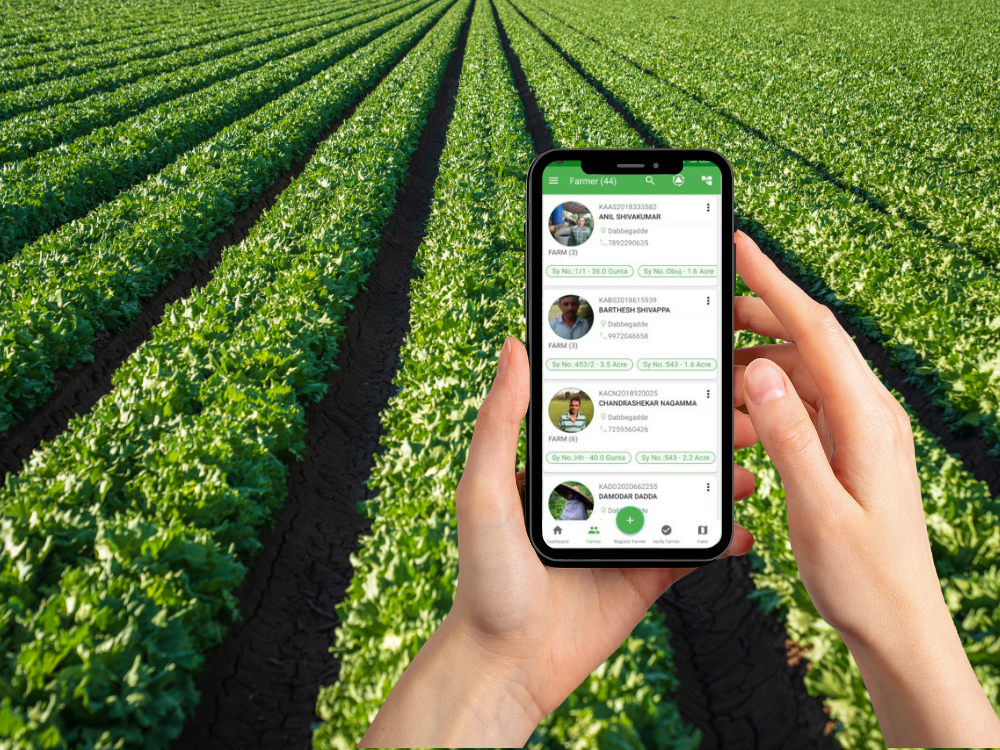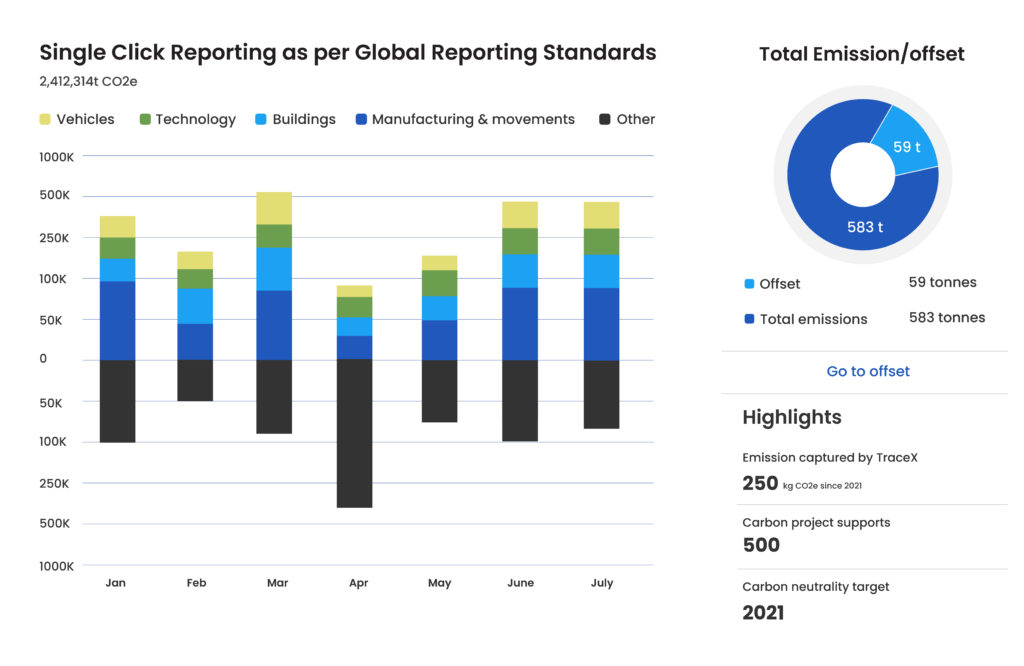Contact: +91 99725 24322 |
Menu
Menu
Explore the journey of land restoration with our case study on regenerative agriculture, showcasing the transformative impact of TraceX DMRV solutions. Learn how sustainable practices and advanced technology converge to revitalize barren lands, fostering ecological renewal and agricultural resilience.

In an era where climate action is non-negotiable, a forward-thinking organization set its sights on a mission to revolutionize the agricultural landscape. This case study delves into the organization’s quest for digital MRV (Monitoring, Reporting, and Verification) solutions to drive sustainability through land restoration with soil regenerative agriculture practices. Follow the journey as they find the perfect ally in TraceX DMRV and witness the incredible impact of their collaboration.
Regenerative practices are gaining popularity as an effective solution to achieving sustainable development goals. These practices involve working with natural ecosystems to rebuild and restore the environment. Regenerative agriculture takes advantage of soil as a carbon sink, improves soil quality, and produces more nutritious food in ways that make it not only better for the consumers but also the producers.
Regenerative agriculture aims to put more into the environment and society than it takes out
The primary goal of regenerative agriculture is to regenerate degraded land and soil, which in turn can lead to increased profitability and livelihood for farmers. Through the use of sustainable interventions, barren land can be transformed into fertile and cultivable land. This not only benefits the environment by restoring soil health, reducing erosion and improving water retention, it also enhances biodiversity and benefits farmers by increasing yields and profitability.
The conversion of land used for conventional farming alone threatens 86% of species at the risk of extinction and accounting for 24% of global greenhouse gas emissions.
Organizations have a unique opportunity to lead the transformation to regenerative agriculture by supporting farmers who adopt these practices. Organization need to work to make agriculture more sustainable by partnering with farmers and forest communities around the world to use methods that protect the land as well as their livelihoods.
Organizations have a unique opportunity to lead the transformation to regenerative agriculture by supporting farmers who adopt these practices. Organization need to work to make agriculture more sustainable by partnering with farmers and forest communities around the world to use methods that protect the land as well as their livelihoods.
Sustainability needs to be a Journey and Regeneration as the Goal.
The organization plans to undertake various interventions so that farmers generate enough income from this land and continue sustainable agriculture further. It plans to capture the KPIs in these sustainability practices and monitor and report the impact so as to scale up the model.
The implementation partner involved oversees the various field level activities related to farmer mobilization, farm activities and training.
TraceX’s blockchain powered traceability solutions provides the farm level digitization to capture the various practices and the KPIs to realize the sustainability objectives. This encompasses Baselining of 4 major scopes viz. Soil Health, Water Footprint, Biodiversity and Farmer’s profitability.
Farmer onboarding involves capturing details like Plot ID, Survey number, Farm and Crop area, Water source, soil type, address details, landholding details and production practices. This data is normally inputted through the user-friendly multilingual offline mobile app. The farm plots of each farmer is geo-spatially mapped. Overlapping of farms can be identified based on knowing the details of the already mapped farms. The geo-mapped farms can also be registered for satellite monitoring where parameters like NDVI, Soil moisture and Soil Macro nutrient levels are captured.
Soil Health, Water availability, Biodiversity and Farmer’s profitability are the major baseline indicators measured in the project.
Soil Health – Assessment of Soil parameters and comparison of its trends over the years helps to analyse the land and soil health.
Water Availability – Soil moisture content and its comparison over years is necessary to construct watersheds and other harvesting structures.
Biodiversity – Assessment of biodiversity parameters and comparison of its trends over the years helps to analyse biodiversity in the project region.
Farmer Profitability – Capturing the various costs incurred during the project and the revenue generated helps to assess farmer profitability.
Configuration and Monitoring of activities
Farm-Level Activities
Project-Level Activities
Dashboards and Reporting
Reports and Dashboards play a critical role in regenerative agriculture platforms by providing farmers and other stakeholders with key insights and data on various aspects of their operations.
Farmer reports, Soil Reports, Workflow reports, PoP deviation reports, Production cost reports, Harvest reports and Procurement reports are few of the reports generated.
Dashboards provide a clear and concise way to communicate with stakeholders like investors, lenders and customers about the performance and sustainability of their operations.
Training: Regular farmer training programs are held on the ground. Training calendars are configured along with attendance reports.
By leveraging TraceX’s Sustainability and Carbon management platforms, the organization has been able to gain real-time visibility into sustainable farming practices and track and monitor their progress towards carbon neutrality and farmer welfare.

This partnership has demonstrated the powerful impact that technology can have on the agriculture industry and its ability to drive sustainable change and benefit farmers and communities around the world.
Transparency, Trust and Success for your Climate Journey.

Copyright © 2021 Blockchain for Food Safety, Traceability and Supplychain Transparency
We use cookies on our website to give you the most relevant experience by remembering your preferences and repeat visits. By clicking “Accept All”, you consent to the use of ALL the cookies. However, you may visit "Cookie Settings" to provide a controlled consent.
| Cookie | Duration | Description |
|---|---|---|
| cookielawinfo-checkbox-analytics | 11 months | This cookie is set by GDPR Cookie Consent plugin. The cookie is used to store the user consent for the cookies in the category "Analytics". |
| cookielawinfo-checkbox-functional | 11 months | The cookie is set by GDPR cookie consent to record the user consent for the cookies in the category "Functional". |
| cookielawinfo-checkbox-necessary | 11 months | This cookie is set by GDPR Cookie Consent plugin. The cookies is used to store the user consent for the cookies in the category "Necessary". |
| cookielawinfo-checkbox-others | 11 months | This cookie is set by GDPR Cookie Consent plugin. The cookie is used to store the user consent for the cookies in the category "Other. |
| cookielawinfo-checkbox-performance | 11 months | This cookie is set by GDPR Cookie Consent plugin. The cookie is used to store the user consent for the cookies in the category "Performance". |
| viewed_cookie_policy | 11 months | The cookie is set by the GDPR Cookie Consent plugin and is used to store whether or not user has consented to the use of cookies. It does not store any personal data. |
WhatsApp us